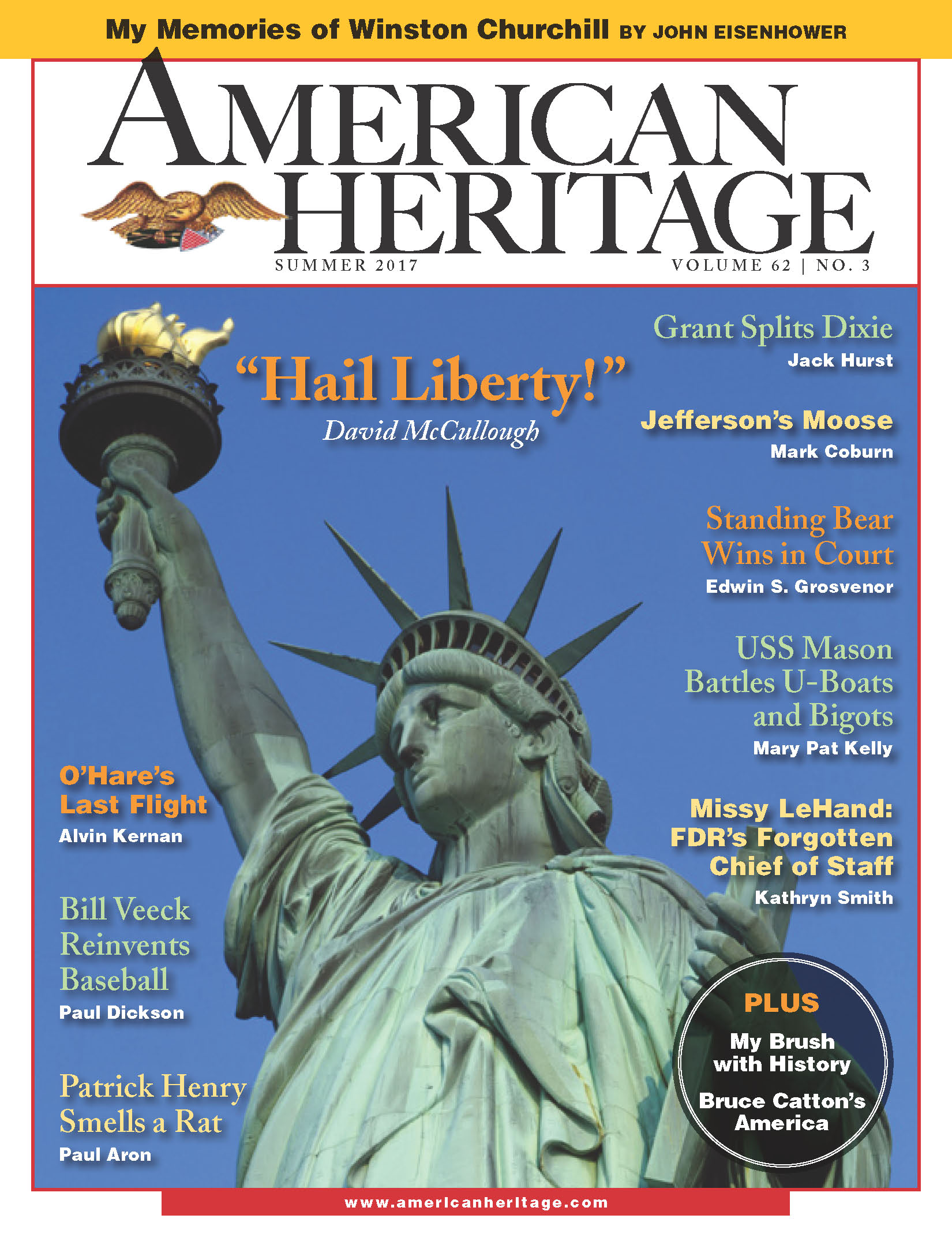Why do you need so much money to be rich nowadays? It’s a question that historians and readers of history have always found difficult to answer.
-
May/June 1989
Volume40Issue4
L.P. Hartley began his masterly novel The Go-Between with the words “The past is a foreign country: they do things differently there.” No-where is this difference with the past more apparent than in the realm of getting and spending, for like most foreign countries, the past uses a money different from ours, and the historian must somehow translate its value into modern terms.
This seemingly simple imperative turns out to be one of the most intractable problems a historian faces. Indeed, there is no simple solution. But there are some helpful rules to guide the way. Let’s begin by considering a famous New York real estate deal.
In 1917 Morton F. Plant—a man who got off to a brisk start in life by inheriting his father’s railroad fortune—sold his Fifth Avenue mansion to the jewelry firm of Cartier for $1,200,000. Instead of taking the money, however, Mr. Plant took it out in trade, exchanging his house for a “two-strand, Oriental pearl necklace.”
By economic definition, the house and the necklace were of equal value at the time of the transaction, at least as far as Mr. Plant and Cartier were concerned. But today, seventy-two years later, the value of each has changed very considerably.
The mansion, located on the southeast corner of Fifth Avenue and Fifty-second Street and now an official New York City landmark, remains to this day both Cartier’s premier American store and one of the most desirable pieces of commercial real estate in the world. While no firm figures are possible since the building has not been sold recently, the value of Cartier’s property is certainly in excess of $20,000,000, and the firm has already sold the air rights for a very considerable sum.
Meanwhile, fate has not been nearly so kind to the value of Oriental pearls. The whereabouts of the Cartier necklace is currently unknown (at least to Cartier), but today a comparable necklace would not be worth more than $200,000. Morton Plant’s mansion, in other words, is now worth at least a hundred times that much. (Before shedding a tear for Mr. Plant, be assured that he died in bed at his new Fifth Avenue mansion the following year.)
Obviously the value of a million dollars has changed since 1917. What did $1,000,000 mean to the people living in the second decade of this century, and how can we express it in terms of today’s money? Certainly, in 1917, a man who possessed $1,000,000 was thought to be very rich indeed (Mr. Plant, worth perhaps $25,000,000, was one of the wealthiest people in the country). Today, while a million will keep the wolf comfortably away from the door, it is, alas, only garden-variety riches. There are today in America one million millionaires, and the minimum price of admission to the Forbes list of the four hundred richest Americans was no less than $225,000,000 in 1988.
One reason for this glut of millionaires is that money itself is one commodity that has markedly declined in value in recent years. Because money is a very special sort of commodity, we have a special term for its decline in value. We call it inflation.
Inflation occurs when the supply of money rises faster than the supply of goods and services that can be bought with it. In the sixteenth century the Spanish conquest of the New World caused a flood of gold and silver (the only sort of money at that time) to flow into Europe, and prices quadrupled in a hundred years. Inflation is also closely associated with war, for war usually forces governments into expedient financing schemes. To raise money, the Roman emperors retained the face value of coins while lowering the content of precious metal in them. Needless to say, it did not take long before ordinary Romans caught on to this dodge and began to demand more coins for the same amount of goods and services. Today governments just print additional paper money or flood the banking system with government-backed debt. The effect is the same: The value of money falls and prices rise.
Inflation has ebbed and flowed over the last two thousand years. In the nineteenth century, a relatively peaceful period in world history, there were only temporary bouts of it, and indeed, prices fell on balance between 1800 and 1900. The twentieth century, on the other hand, has been ravaged by both war and inflation.
The decline in the value of money over the years can be measured with some degree of precision, especially in more recent times, when accurate and extensive statistics have been kept and a larger percentage of the population has lived in what economists call the cash economy. The usual method is to track the total price of a basket of commodities. The Consumer Price Index (CPI), prepared every month by the Department of Labor, measures inflation in the U.S. economy in this way today. In the table on this page we can see that a basket of goods that cost $100 in 1967 would, in theory, have cost $25 in 1900 and $328 in 1986.
Perhaps because inflation can be measured with some accuracy and an index of apparent precision created, historians have often acted as though inflation were the sole problem involved in translating the value of money over time. Readers are told simply to multiply antique monetary sums by a given factor in order to convert them to a modern economic idiom.


